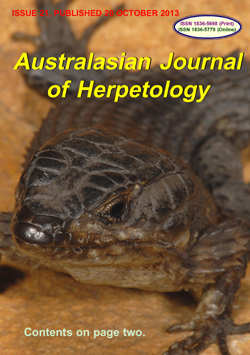 Gila Monster gets a new genus and there are 35 million good reasons for it!
Gila Monster gets a new genus and there are 35 million good reasons for it!
30 October 2013
The global zoologist fraternity has been taken by storm with the recent reclassification of the iconic Gila Monster and transfer to the new genus Maxhosersaurus.
Being one of just two widely recognized types of “venomous” lizard, the other being the Mexican Beaded Lizard, these lizards have recently come under unprecedented taxonomic scrutiny.
Using molecular evidence, the Beaded Lizard was this year split into four genetically distinct species.
Using the same molecular evidence, as well as obvious morphological differences, Australian Zoologist Raymond Hoser has now, more recently removed the Gila Monster from the genus Heloderma and placed it in a new genus Maxhosersaurus.
These days, the act of erecting a whole new genus for a species or group of species is rarely done due to the fact that most genera of vertebrate were named in the 1800’s. Furthermore, when it turns out that a species is found to be sufficiently divergent from others to warrant being placed in different and new genus, there is usually an “available” name from the 1800’s. That is because back then scientists had a race to put generic names on as many species as they could, so that they could immortalize themselves.
The result of that was many names being relegated to synonymy with earlier coined names, but remaining available under the zoological code should a later scientist decide a new genus should be erected.
Hoser said he was “gobsmacked” that no scientist had ever sought to place Gila Monsters in a genus apart from the Beaded Lizards noting that they are so obviously different from one another.
As there were no pre-existing or available names for such a genus, Hoser was able to name the genus after his cousin, Max Hoser, recognizing his earlier contributions to herpetology in the 1970’s.
Until recently, zoologists would argue about whether or not given morphological differences between animals merited splitting up of genera. However molecular studies have largely removed this uncertainty, with deeply divided groups being split without major conflict among scientists.
At the genus level, reptile species diverged more than 10 million years ago, are generally placed in separate genera. And so with a 35 million year divergence reported for Gila Monsters from their nearest relatives, the Beaded Lizards, it was a no-brainer that the Gila Monsters needed a new genus.
Hoser’s paper splitting Heloderma into two was published in hard copy in Australasian Journal of Herpetology, Issue 21 on 20 October 2013.
At the same time, Hoser reviewed other groups and also found other unnamed genera, the result being the resurection of old names as well as the first time naming of other distinct groups at the genus level.
Naming of species and genera is an emotionally charged arena, as the names literally stick for ever if properly assigned and rivalry in the snake and reptile handling business is intense. In Hoser's case, because he has a wildlife education business, "Snakebusters", commercial competitors commonly complain when Hoser properly names species, because they are forced to use "Hoser names" and regard that as unfair promotion of Hoser and his business interests.
However Hoser says the naming of species and genera is a scientific endeavour and an essential first step towards the management and conservation of biodiversity.
Furthermore, besides the fact that there is no commercial benefit in naming species and genera and the process is increadibly tedius and time-consuming, Hoser see's his work as being purely in the public benefit. Hoser says "without the basic infrastructure of a robust taxonomy for wildlife, there can never be proper conservation planning"
Hoser is a globally recognized scientist and author of nine definitive books, including the "Bibles" Australian Reptiles and Frogs published in 1989 and Endangered Animals of Australia in 1991, the latter being the catalyst for the first time wildlife conservation was put on the political agenda in Australia.
The journal, Australasian Journal of Herpetology and the relevant recent scientific papers can be obtained here:
http://www.smuggled.com/AJHIP1.htm
| Hoser herpetology papers index. |
![]()
Non-urgent email inquiries via the Snakebusters bookings page at:
http://www.snakebusters.com.au/sbsboo1.htm
Urgent inquiries phone:
Melbourne, Victoria, Australia:
(03) 9812 3322 or 0412 777 211